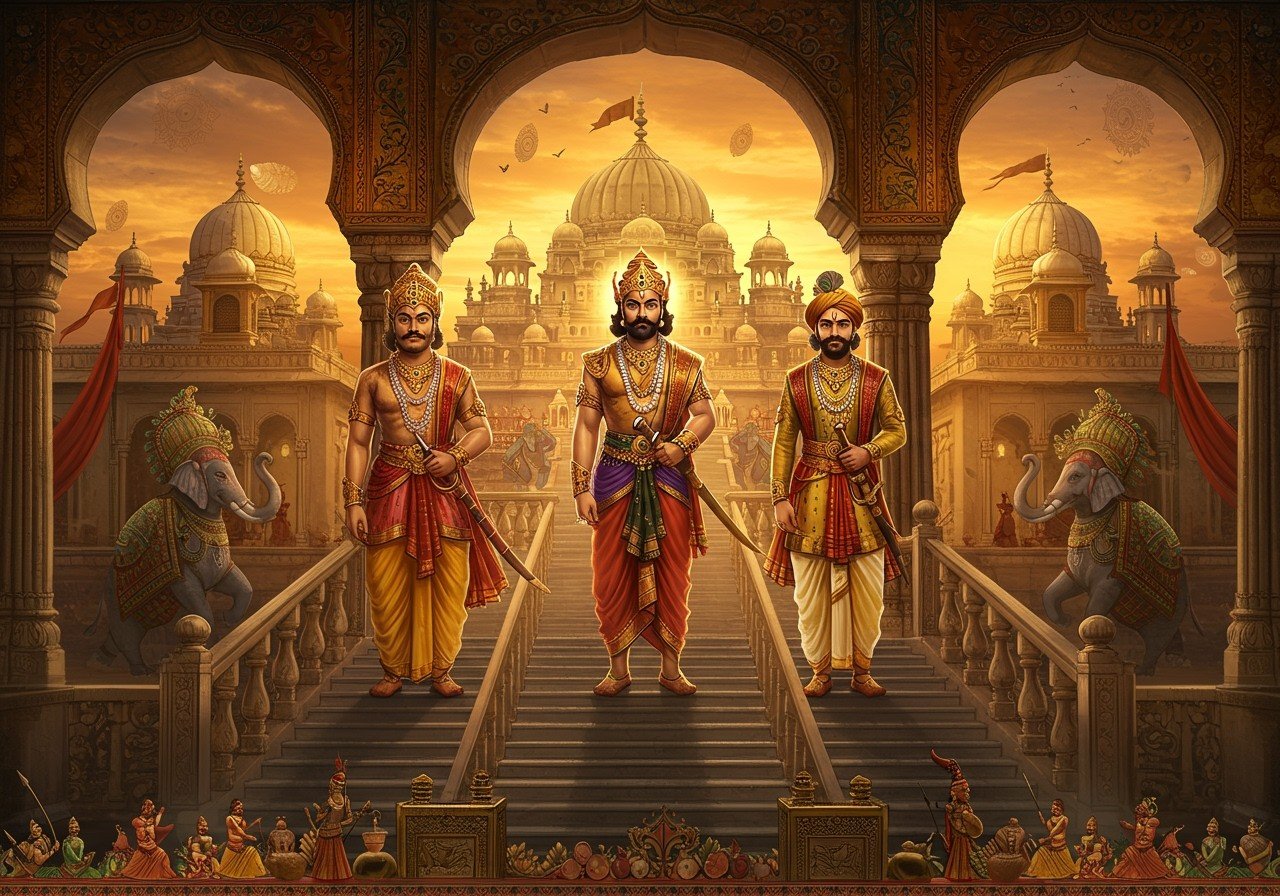
Medieval India, a period spanning from the 8th to the 18th century, witnessed the rise and fall of numerous powerful dynasties. These kingdoms left an indelible mark on India’s rich tapestry of history, culture, and architecture. This era, bridging ancient and modern times, saw significant empires like the Gurjara Pratihara in North India, which later fragmented into Rajput states such as the Chahamanas, Paramaras of Malwa, and Chandellas. Let’s delve into some of the most prominent dynasties of this era, focusing on the period between 750-1200 CE.
Early Medieval Period (750-1200 CE)
This period saw the emergence of several key dynasties that shaped the political and cultural landscape of India. These kingdoms contributed significantly to art, architecture, and religious practices, leaving behind a legacy that continues to inspire awe and wonder. For a deeper understanding of this era, consider exploring resources like Kandariya Mahadeva Temple: Religious Importance and History and Khajuraho and Kandariya Mahadeva: A Cultural Heritage Journey.
- The Gurjara-Pratihara Dynasty (c. 750-1000 CE): This dynasty played a crucial role in resisting Arab invasions into India. They established a powerful kingdom in northern India, fostering a period of stability and prosperity. Their architectural contributions are noteworthy, reflecting a blend of various styles.
- The Pala Empire (c. 750-1174 CE): Based in Bengal and Bihar, the Pala Empire was a major patron of Buddhism. They supported renowned monasteries like Nalanda and Vikramashila, which became centers of learning and scholarship, attracting students from across Asia. The Palas also made significant contributions to art and sculpture.
- The Rashtrakuta Dynasty (c. 753-982 CE): Ruling from the Deccan region, the Rashtrakutas were known for their military prowess and administrative efficiency. They constructed impressive rock-cut temples, showcasing their architectural skills and artistic sensibilities. Their patronage of the arts and literature further enriched the cultural landscape.
- The Chandela Dynasty (c. 831–1308 CE): Famous for their stunning temples at Khajuraho, the Chandelas left behind a remarkable legacy of architecture and sculpture. The intricate carvings and elaborate designs of the Khajuraho temples reflect the dynasty’s artistic and religious fervor. To delve deeper into the architectural marvels of the Chandela dynasty, explore Chandela Dynasty Architecture: The Kandariya Mahadeva Temple Legacy.
- The Chola Dynasty (c. 848-1279 CE): The Cholas, ruling from South India, established a powerful maritime empire. They were known for their naval expeditions, administrative innovations, and magnificent temple architecture, particularly the Brihadeeswarar Temple at Thanjavur.
Later Medieval Period (1206-1757 CE)
This era saw the establishment of the Delhi Sultanate and the rise of other powerful empires. These periods brought significant changes to India’s political, social, and cultural fabric.
Connecting with History Through Spirituality
Exploring history can be a deeply enriching experience. Enhance your understanding of these powerful dynasties and their influence on India’s cultural landscape by incorporating spiritual practices into your studies. Poojn.in offers a wide selection of authentic puja items and spiritual resources to deepen your connection with this historical period.
- Bel Mala: Connect with Lord Shiva, a deity associated with transformation and destruction, symbolizing the cyclical nature of empires.
- Shiva Lingam: Deepen your understanding of creation and destruction, reflecting the rise and fall of dynasties.
Conclusion
The medieval period stands as a testament to India’s rich and diverse past. Understanding the rise and fall of these dynasties provides valuable insights into the forces that shaped the nation. By exploring the historical narratives and engaging with spiritual practices, we can gain a deeper appreciation for the complexities of this era.


